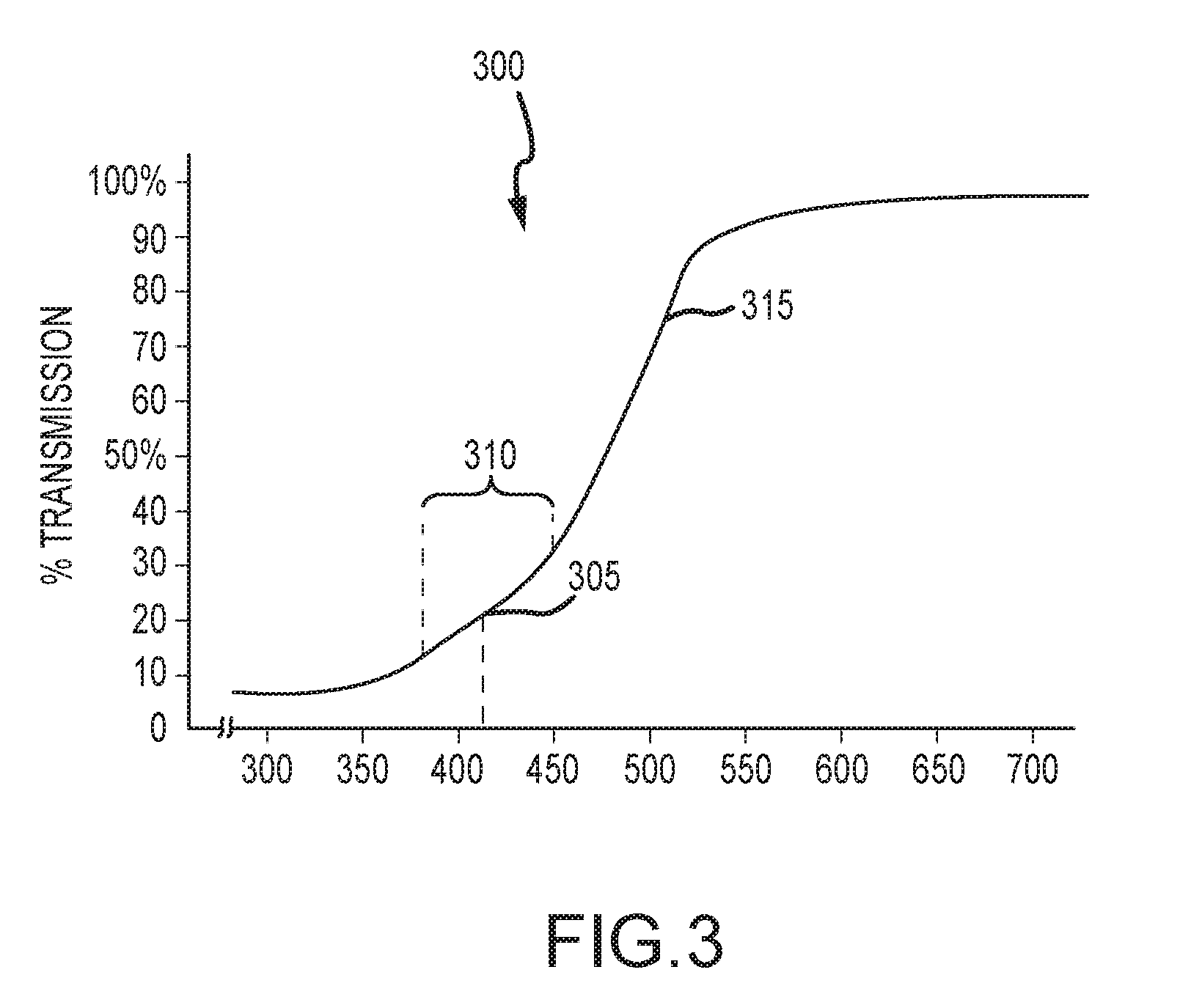Ophthalmic eyewear for regulating ocular exposure to high energy electromagnetic radiation
a technology of electromagnetic radiation and eyewear, applied in the field of eyewear, can solve the problems of insufficient wavelength filtering, harmful effects of blue light of this wavelength on the photoreceptor, and low level of blue light filtering disadvantageously failing to respect the conditions in which an individual is exposed to high levels of hazardous blue light, and achieve the effect of preventing age-related macular degeneration
- Summary
- Abstract
- Description
- Claims
- Application Information
AI Technical Summary
Benefits of technology
Problems solved by technology
Method used
Image
Examples
Embodiment Construction
[0033]The present disclosure relates to the protection from high energy electromagnetic radiation and prevention of Age Related Macular Degeneration (AMD) as well as offering aesthetically acceptable eyewear that does not block the transmission of light that contributes to alertness and well-being. Persons skilled in the art will readily appreciate that various aspects of the present disclosure can be realized by any number of devices and methods configured to perform the intended functions. Stated differently, other devices and methods can be incorporated herein to perform the intended functions. It should also be noted that the accompanying drawing figures referred to herein are not all drawn to scale, but may be exaggerated to illustrate various aspects of the present disclosure, and in that regard, the drawing figures should not be construed as limiting. Likewise, different surface shading may be used throughout the figures to denote different parts but not necessarily to denote...
PUM
 Login to View More
Login to View More Abstract
Description
Claims
Application Information
 Login to View More
Login to View More - R&D
- Intellectual Property
- Life Sciences
- Materials
- Tech Scout
- Unparalleled Data Quality
- Higher Quality Content
- 60% Fewer Hallucinations
Browse by: Latest US Patents, China's latest patents, Technical Efficacy Thesaurus, Application Domain, Technology Topic, Popular Technical Reports.
© 2025 PatSnap. All rights reserved.Legal|Privacy policy|Modern Slavery Act Transparency Statement|Sitemap|About US| Contact US: help@patsnap.com



